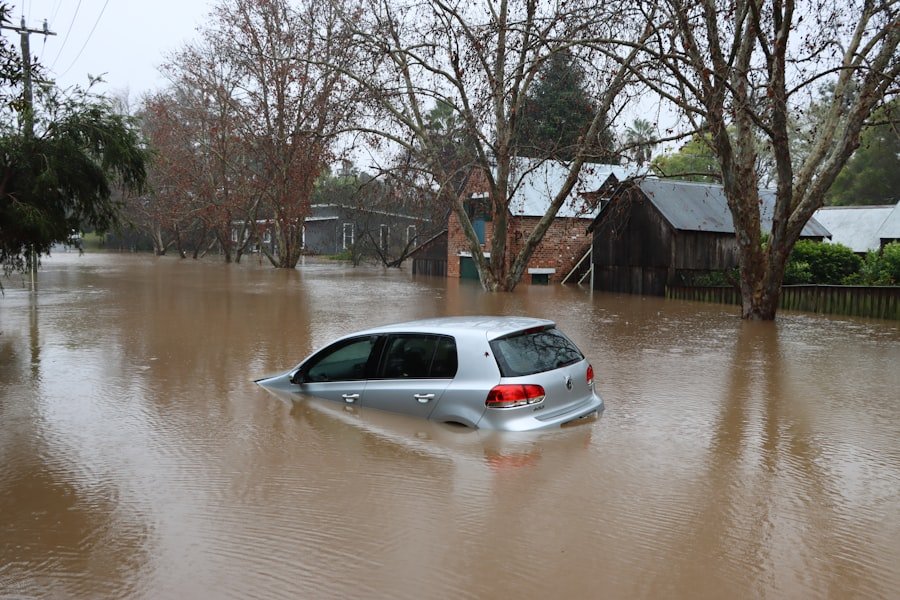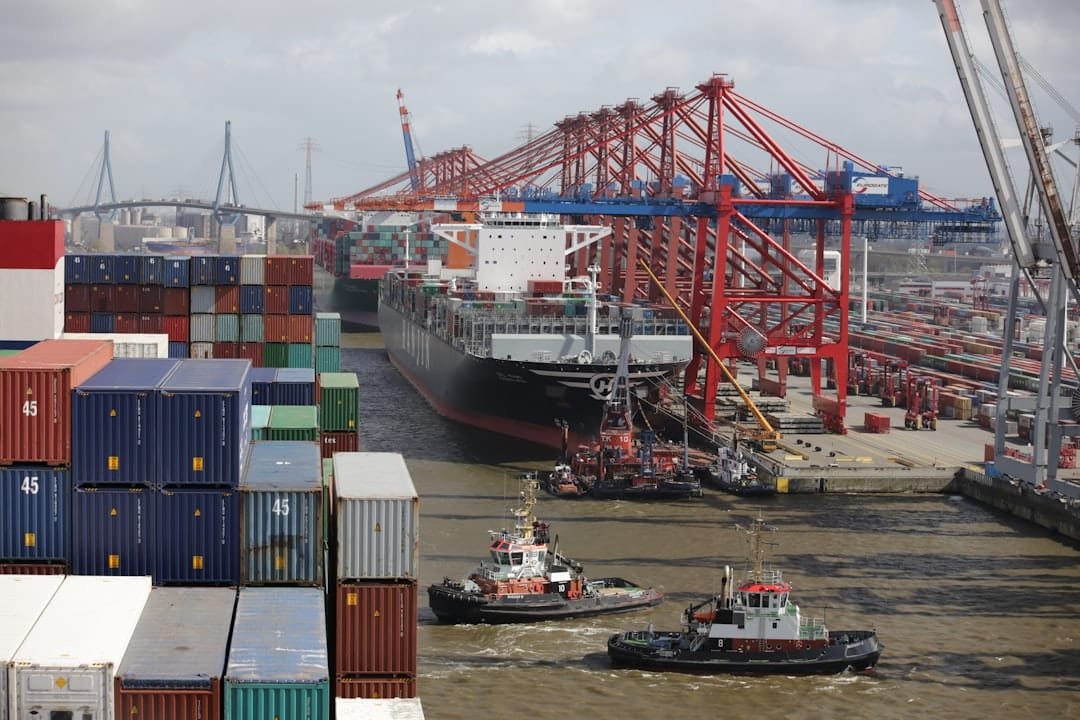Climate change poses significant challenges for infrastructure investment. As global temperatures rise, extreme weather events like hurricanes, floods, and droughts are becoming more frequent and intense. These events can cause extensive damage to critical infrastructure such as roads, bridges, buildings, and utility systems.
Consequently, there is an increasing need for infrastructure investments that are resilient to climate change impacts. Infrastructure investment is essential for economic growth and societal well-being, encompassing sectors such as transportation, energy, water, and telecommunications. However, the growing threat of climate-related extreme weather events necessitates new approaches to infrastructure planning and development.
These approaches must prioritize resilience to withstand the effects of a changing climate. This article will examine several key aspects of climate-resilient infrastructure investment:
1. Challenges faced by existing infrastructure due to climate change
2.
Impact of climate change on infrastructure investment decisions
3. Strategies for developing climate-resilient infrastructure
4. Case studies of successful climate-resilient infrastructure projects
5.
The role of government policies in promoting climate-resilient infrastructure investment
By addressing these topics, we can better understand the importance of adapting infrastructure to meet the challenges posed by climate change and ensure long-term sustainability and resilience.
Key Takeaways
- Climate change poses significant challenges to infrastructure investment
- Infrastructure is vulnerable to extreme weather events and rising sea levels
- Climate change impacts must be considered in infrastructure investment decisions
- Strategies for climate-resilient infrastructure include green infrastructure and adaptive design
- Government policies play a crucial role in promoting climate-resilient infrastructure investment
Challenges Faced by Infrastructure Due to Climate Change
Coastal and Inland Impacts
Rising sea levels and increased storm surges can lead to coastal erosion and flooding, threatening critical infrastructure such as ports, airports, and coastal roads. Inland, heavy rainfall and flooding can damage transportation networks, water treatment facilities, and energy infrastructure.
Extreme Weather Events
Extreme heat can strain energy systems and lead to power outages, while droughts can reduce water availability for agriculture, industry, and households. Furthermore, the existing infrastructure was often designed based on historical climate data, which may no longer be reliable in the face of a changing climate.
Interconnected Risks and Resilience
The interconnected nature of infrastructure systems means that damage to one sector can have cascading effects on others, amplifying the overall impact of climate change on infrastructure. To address these challenges, it is essential to incorporate climate resilience into infrastructure investment decisions. This requires a thorough understanding of the potential impacts of climate change on infrastructure systems and the development of strategies to enhance their resilience.
By doing so, infrastructure can continue to support economic growth and societal well-being in the face of a changing climate.
Effects of Climate Change on Infrastructure Investment Decisions

The effects of climate change have significant implications for infrastructure investment decisions. As the frequency and severity of extreme weather events increase, there is a growing need to consider the long-term resilience of infrastructure systems. This includes assessing the vulnerability of existing assets to climate impacts and incorporating resilience measures into new infrastructure projects.
Climate change can also affect the financial viability of infrastructure investments. For example, damage from extreme weather events can lead to costly repairs and downtime for critical infrastructure systems. In addition, insurance costs for infrastructure projects in high-risk areas may increase as climate risks become more pronounced.
These factors can affect the overall cost-benefit analysis of infrastructure investments and may require adjustments to financial planning and risk management strategies. Furthermore, climate change can influence the demand for certain types of infrastructure. For example, rising temperatures may increase the need for cooling systems in buildings and transportation vehicles.
Similarly, changes in precipitation patterns may require adjustments to water management infrastructure such as reservoirs and drainage systems. As a result, infrastructure investment decisions need to consider not only the physical impacts of climate change but also the evolving needs of society in a changing climate. In light of these effects, it is crucial for infrastructure investors and decision-makers to integrate climate considerations into their planning processes.
This includes conducting comprehensive risk assessments, incorporating resilience measures into project designs, and engaging with stakeholders to understand their evolving needs in a changing climate.
Strategies for Climate-Resilient Infrastructure Investment
To address the challenges posed by climate change, there are several strategies that can enhance the resilience of infrastructure investments. One approach is to incorporate climate risk assessments into the planning and design of infrastructure projects. This involves evaluating the potential impacts of climate change on infrastructure systems and identifying measures to enhance their resilience.
For example, this could include designing buildings to withstand higher wind speeds or incorporating green infrastructure such as permeable pavements to mitigate flooding. Another strategy is to invest in the maintenance and rehabilitation of existing infrastructure to enhance its resilience to climate impacts. This could involve retrofitting bridges to withstand higher flood levels or upgrading drainage systems to cope with increased precipitation.
By proactively addressing vulnerabilities in existing assets, it is possible to reduce the risk of damage from future extreme weather events. In addition, it is important to consider nature-based solutions as part of climate-resilient infrastructure investment. These solutions leverage natural processes such as wetlands and forests to provide protection against climate impacts such as flooding and erosion.
By integrating nature-based solutions into infrastructure projects, it is possible to enhance resilience while also providing additional environmental and social benefits. Furthermore, it is essential to engage with stakeholders and communities in the planning and implementation of climate-resilient infrastructure projects. This includes incorporating local knowledge and priorities into project designs and ensuring that infrastructure investments align with the needs of society in a changing climate.
By fostering collaboration and participation, it is possible to develop infrastructure that not only enhances resilience but also contributes to broader societal goals. Overall, these strategies can help ensure that infrastructure investments are resilient to the impacts of climate change, thereby safeguarding critical assets and supporting sustainable development in a changing climate.
Case Studies of Successful Climate-Resilient Infrastructure Projects
There are several examples of successful climate-resilient infrastructure projects that demonstrate the effectiveness of innovative approaches to enhancing resilience. One such example is the Big U project in New York City, which aims to protect Lower Manhattan from coastal flooding and storm surges. The project incorporates a combination of hard infrastructure such as flood barriers and soft infrastructure such as parks and green spaces to provide protection while also enhancing public amenities.
By integrating nature-based solutions with traditional engineering approaches, the Big U project demonstrates how climate-resilient infrastructure can provide multiple benefits for communities. Another example is the Thames Barrier in London, which has been instrumental in protecting the city from tidal surges since its completion in 1982. The barrier was designed with future sea level rise in mind and has proven effective in mitigating flood risk for London’s low-lying areas.
The success of the Thames Barrier highlights the importance of long-term planning and design considerations in developing resilient infrastructure that can withstand the impacts of a changing climate. Furthermore, the city of Rotterdam in the Netherlands has implemented a comprehensive strategy for climate-resilient urban development. This includes measures such as elevated buildings, green roofs, and water plazas to manage stormwater runoff and reduce flood risk.
By integrating these measures into urban planning and design, Rotterdam has become a global leader in climate-resilient infrastructure and serves as a model for other cities facing similar challenges. These case studies demonstrate that innovative approaches to infrastructure investment can effectively enhance resilience to climate impacts while also providing additional benefits for communities and the environment. By learning from these examples, it is possible to develop more effective strategies for addressing the challenges posed by climate change in infrastructure investment.
The Role of Government Policies in Climate-Resilient Infrastructure Investment

Establishing Clear Guidelines for Climate Risk Assessment
One important aspect of government policy is establishing clear guidelines for assessing and managing climate risks in infrastructure projects. This includes requiring developers to conduct comprehensive risk assessments that consider potential impacts such as sea level rise, extreme precipitation, and heat stress. By setting clear standards for assessing climate risks, governments can ensure that infrastructure investments are resilient to a changing climate.
Financial Incentives for Climate-Resilient Infrastructure
In addition, governments can provide financial incentives for climate-resilient infrastructure projects through mechanisms such as grants, subsidies, or tax incentives. By making it financially attractive for developers to invest in resilience measures, governments can encourage the adoption of innovative approaches that enhance the long-term sustainability of infrastructure assets.
Fostering Collaboration and Long-Term Planning
Furthermore, long-term planning frameworks such as urban development plans and transportation master plans provide an opportunity to integrate climate considerations into infrastructure investment decisions. By incorporating climate adaptation goals into these planning processes, governments can ensure that infrastructure investments align with broader societal objectives such as environmental sustainability and social equity. Moreover, government policies can also play a role in fostering collaboration between different stakeholders involved in infrastructure investment, creating an enabling environment for the development of holistic approaches to climate-resilient infrastructure investment.
The Future of Infrastructure Investment in a Changing Climate
In conclusion, climate change poses significant challenges for infrastructure investment due to its potential impacts on the vulnerability, financial viability, and demand for critical assets. However, by incorporating innovative strategies such as nature-based solutions, comprehensive risk assessments, and stakeholder engagement into infrastructure investment decisions, it is possible to enhance resilience to climate impacts while also providing additional benefits for communities and the environment. Furthermore, government policies play a crucial role in shaping the landscape for climate-resilient infrastructure investment by setting clear standards for assessing climate risks, providing financial incentives for resilient projects, integrating climate considerations into long-term planning frameworks, and fostering collaboration between stakeholders.
By learning from successful case studies such as the Big U project in New York City, the Thames Barrier in London, and Rotterdam’s comprehensive urban development strategy, it is possible to develop more effective strategies for addressing the challenges posed by climate change in infrastructure investment. Overall, by integrating climate considerations into infrastructure investment decisions and creating an enabling environment through government policies, it is possible to develop resilient infrastructure that can support sustainable development in a changing climate. As we look towards the future, it is essential for stakeholders at all levels – from investors and developers to policymakers and communities – to work together towards building a more resilient built environment that can withstand the challenges posed by a changing climate.
If you’re interested in learning more about the economic impact of climate change, you should check out The Econosphere’s blog. They have a variety of articles discussing the intersection of economics and environmental issues, including one on the potential effects of climate change on infrastructure investment decisions. You can find more thought-provoking content on their website here.
FAQs
What is climate change?
Climate change refers to significant and long-term changes in the Earth’s climate, including changes in temperature, precipitation, and wind patterns. These changes are largely attributed to human activities, such as the burning of fossil fuels and deforestation, which release greenhouse gases into the atmosphere.
How does climate change impact infrastructure investment decisions?
Climate change can impact infrastructure investment decisions in several ways. For example, it can increase the risk of extreme weather events, such as hurricanes, floods, and wildfires, which can damage or destroy infrastructure. Additionally, rising sea levels and changing precipitation patterns can affect the design and location of infrastructure projects, leading to increased costs and potential disruptions.
What are some examples of infrastructure affected by climate change?
Infrastructure affected by climate change includes roads, bridges, airports, ports, water and wastewater systems, energy facilities, and telecommunications networks. These assets are vulnerable to the impacts of climate change, such as increased flooding, erosion, and heat stress, which can compromise their functionality and longevity.
How can infrastructure be made more resilient to climate change?
Infrastructure can be made more resilient to climate change through various measures, such as incorporating climate risk assessments into the planning and design process, using climate-resilient materials and construction techniques, and implementing nature-based solutions, such as green infrastructure and coastal restoration. Additionally, investing in adaptive technologies and infrastructure maintenance can help mitigate the impacts of climate change.
What role do policymakers play in addressing the impact of climate change on infrastructure investment?
Policymakers play a crucial role in addressing the impact of climate change on infrastructure investment by developing and implementing regulations, standards, and incentives that promote climate-resilient infrastructure. They can also allocate funding for research, planning, and infrastructure projects that consider climate change impacts and prioritize adaptation and mitigation strategies.








